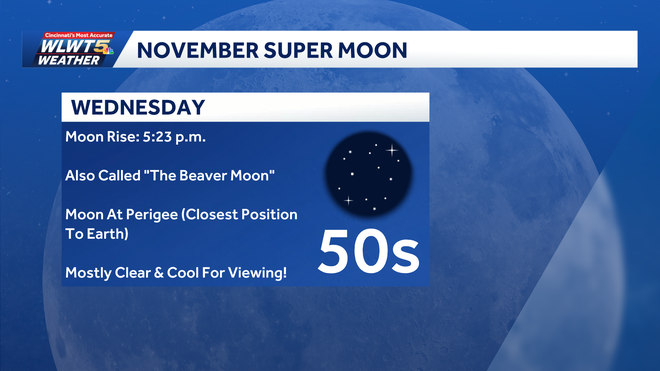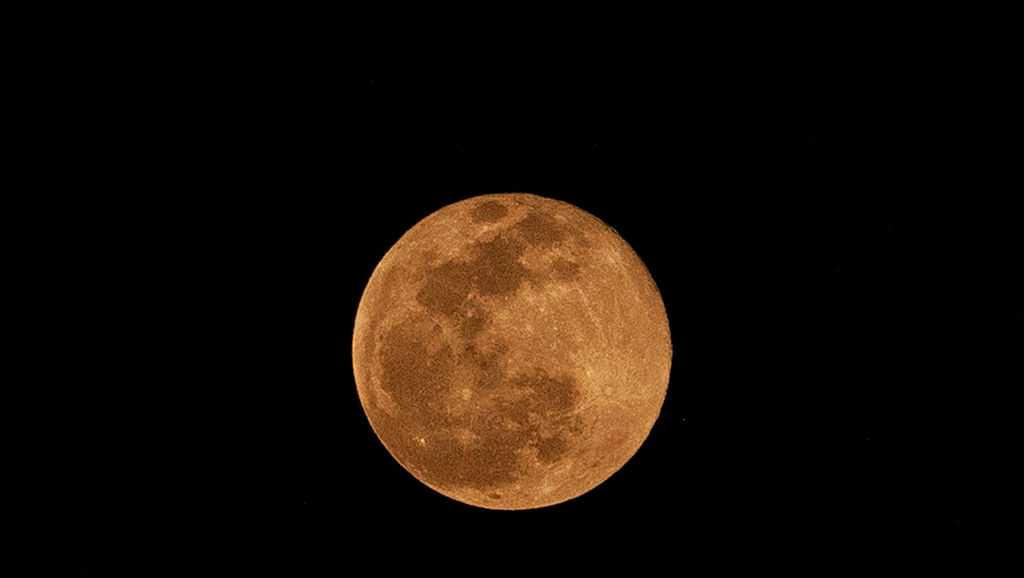The closest full moon of the year will dazzle the sky this week.November’s supermoon or Beaver Moon will reach peak fullness Wednesday at 8:19 a.m. but it will appear full Tuesday through Friday morning. Beaver Moon is one of the nicknames for the November full Moon. According to NASA, the term has origins from a variety of traditions and folklore in Native American and European culture, one being it’s when beavers prepare for the winter by fortifying dams and stocking their food supply. It’s the closest full moon of the year.According to NASA, the term “supermoon” was coined in 1979 and occurs when a full Moon coincides with its closest approach to Earth.Supermoons are not rare but make for an enjoyable stargazing experience.“The Moon’s orbit takes it around the Earth about once every 27 and one-third days,” NASA research scientist Dennis Gallagher said. “That time of closest approach to Earth, or perigee, happens three or four times each year due to the motions of Earth and the Moon around the Sun.”Cincinnati Astronomer Dean Regas is hosting a viewing part at Ault Park on Wednesday from 6 to 8 p.m. where stargazers can explore different telescope designs, ask questions with the experts, and weather permitting, see Saturn through a telescope.The next full moon will be on Dec. 4.
CINCINNATI —
The closest full moon of the year will dazzle the sky this week.
November’s supermoon or Beaver Moon will reach peak fullness Wednesday at 8:19 a.m. but it will appear full Tuesday through Friday morning.

Beaver Moon is one of the nicknames for the November full Moon.
According to NASA, the term has origins from a variety of traditions and folklore in Native American and European culture, one being it’s when beavers prepare for the winter by fortifying dams and stocking their food supply.
It’s the closest full moon of the year.
According to NASA, the term “supermoon” was coined in 1979 and occurs when a full Moon coincides with its closest approach to Earth.
Supermoons are not rare but make for an enjoyable stargazing experience.
“The Moon’s orbit takes it around the Earth about once every 27 and one-third days,” NASA research scientist Dennis Gallagher said. “That time of closest approach to Earth, or perigee, happens three or four times each year due to the motions of Earth and the Moon around the Sun.”
Cincinnati Astronomer Dean Regas is hosting a viewing part at Ault Park on Wednesday from 6 to 8 p.m. where stargazers can explore different telescope designs, ask questions with the experts, and weather permitting, see Saturn through a telescope.
The next full moon will be on Dec. 4.

